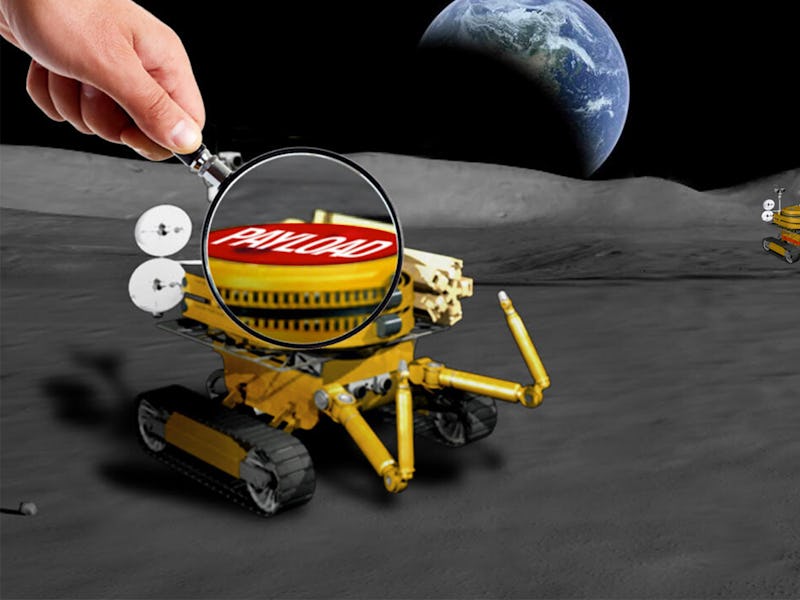Robots the size of soap are the future of sustainable science on the Moon
The "Honey I Shrunk the NASA Payload" competition has a winner.

Robotic explorers of other worlds come in all shapes and sizes — there are even ones you can fit in the palm of your hand, like a bar of soap. A handful of these tiny robots are taking on a big mission: setting the stage for a sustainable human presence on the Moon.
On Tuesday, NASA announced the winners for its "Honey, I Shrunk the NASA Payload" challenge, selecting a total of six miniature payload designs for impending lunar missions. In the future, these little robots will likely traverse the surface of the Moon, collecting information on its resources and environment.
Transporting equipment into space is pricy: Sending as little as a pound of payload into Earth's orbit can cost as much as $10,000, according to NASA.
However, as the space agency moves towards its goals of establishing a sustainable presence on the Moon as part of the upcoming Artemis mission, it needs to think of sustainable ways to achieve those goals.
That's where these little robots come in. Lighter payloads are less expensive, and small scouts mean a more mobile operation.
In April, NASA announced a public prize competition for miniature payloads measuring at 3.9 inches by 3.9 inches by 1.9 inches and weighing no more than 0.8 pounds. The competition received hundreds of design submissions from the public.
The next generation — The challenge was funded by NASA's Lunar Surface Innovation Initiative, which calls for next-generation technologies to support future exploration and long-duration presence of the Moon.
Tiny robotic explorers take on the lunar surface.
"The ideas generated by the community were outstanding," Sabah Bux, a technologist at NASA's Jet Propulsion Laboratory, announced. "These designs could help NASA sustain a human presence on the Moon and enable new science."
A total of $160,000 in prizes was awarded to first, second, and third place winners under two categories; lunar resource potential and lunar environment.
The lunar resource potential is for tiny robots carefully, and adorably, exploring the Moon's surface, identifying minerals, volatiles, and other elements, as well as looking for resources on the Moon that could support future astronomers such as water. The team that placed first in this category developed the Puli Lunar Water Snooper: A lightweight, tiny robotic hunter of water molecules on the Moon that is still able to withstand the harsh lunar environment.
Meanwhile, the lunar environment category included designs that focused on exploring the radiation environment around the Moon and the activity of the Sun. The first-place winners in that category created a miniaturized X-ray spectrometer named the Sun Slicer that can measure regions with increased solar activity.
What comes next — NASA is already planning on sending a micro rover to the Moon by the year 2022.
Iris — a four-wheeled rover about the size of a shoebox that weighs less than 5 pounds, is currently in development — will be a pioneer for tiny rovers that NASA hopes to be able to rely on in future missions.
The upcoming Artemis mission is planned for the year 2024. It will send the first woman ever to the Moon and the first man in the more than 50 years later since we first landed on the lunar surface with the Apollo mission.
Unlike the Apollo missions, this time astronauts plan to stay there. Ultimately the Artemis program wants to set up a sustainable presence of astronauts on the Moon, sending a crew up to the lunar surface every year.